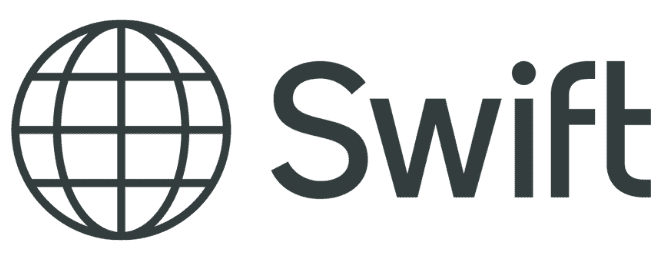The payments industry continues its rapid evolution. The adoption of the ISO 20022 data standard is helping speed up the move towards greater integration and digitisation of the entire payments space. It’s also supporting the drive for enhanced interoperability, and creating more visible, useable data and analytics. All of this is helping banks better understand their customers, how best to serve them, and ultimately creating better outcomes for the industry as a whole.
The starter’s pistol is ready and we’ll soon be out of the blocks for the global migration of cross-border payments to the ISO 20022 standard, beginning in March 2023. We have several exciting years ahead, as we move towards the final destination of having all domestic and cross-border payments using rich and structured data.
We’re looking for material improvements in the form of payments efficiency. Rich data, on its own, isn’t very helpful. It has to be structured and that, really, is the big benefit of the standard.
Isabel Schmidt, co-head of payment products, BNY Mellon

I was curious to understand from BNY Mellon’s Isabel Schmidt about the bank’s perspective on the benefits of ISO 20022. It seems intuitive that the global payments sector should have the same standard in use end-to-end, and that the standard should be rich with important information that can travel with the payments. What are the real business benefits Isabel expects both banks and, more importantly, customers to experience?
During our discussion, we focussed on three overarching benefits and how each benefit of ISO 20022 has direct, positive implications for customer experience when it comes to making payments around the world.
Improvements in payments efficiency
One of the key drivers in moving to ISO 20022 for payments is that it gives participants richer and more structured data than the industry currently has.
This leads to significant operational benefits, Schmidt explained: “We’re looking for material improvements in the form of payments efficiency. Rich data, on its own, isn’t very helpful. It has to be structured and that, really, is the big benefit of the standard. Having rich data, and structured data, allows you to do a lot of the validations required for seamless, end-to-end execution up front.”
At the moment, most of these important validations happen somewhere in the middle of the transaction process and can’t always be done efficiently. However, with ISO 20022, a bank is able to complete many of the required validations at the very start of the transaction process and make sure that the payment is viable. As Schmidt points out, “there is a direct client impact because, as a bank, you can say upfront to your originating client, ‘your payment will get there as you expect it to.’”
There’s a newfound confidence, therefore, that the new standard brings to both banks, and end clients — who have very important, often very large, very meaningful outcomes directly linked with the moving of money safely and securely around the world. This is, “pure operational efficiency, eliminating pain points and friction,” Schmidt said.
A significant reduction in false positives
Structured data also means improved compliance processes. “We anticipate a significant reduction in false positives,” Schmidt said. A false positive is akin to a false alarm, flagging as risky transactions that are actually innocent. When working with huge amounts of data and screening for sanctioned entities, for example, false positives are a significant issue because they require time, cost, and human effort to investigate and process.
“Having structured data allows banks to make sure that all their compliance processes are correctly aligned while the payment is in process, as well as after the transaction is completed,” Schmidt said. “A system that can distinguish between a person living on ‘Cuba Street’ as opposed to living in ‘Cuba’ the country is an important distinction.”
The ISO 20022 standard is predicted to eliminate a significant portion of false positives, thereby saving banks money and allowing valuable resources to be directed toward analysing real risks. “The breadth of identifiers that can be embedded in the payments allows us to improve the quality of the risk checks we do. That means, for one, you eliminate the noise, which means eliminating costs. And, you can then spend a lot more energy on the risks you actually want to identify,” Schmidt said.
Better payments experience for customers
We all want to deliver a better payments experience for customers, and many of us interpret that as ‘faster payments.’ But, as Schmidt explained: “Faster doesn’t just mean between banks. It means faster payments to the point of reconciliation.”
According to a study by Aite-Novarica Group in collaboration with BNY Mellon, 60 percent of businesses surveyed consider ‘faster payments’ a gap in their capabilities and offering. So, she said, we need to be conscious that, from a client perspective, “‘faster payments’ doesn’t just mean ‘faster settlement’ of a transaction in a market infrastructure. It’s an end-to-end experience, from the payment being initiated to when it gets to the final destination and is fully recognised.”
Rich and structured data in the ISO 20022 message will help this by providing “better checks upfront, lower friction in the middle, and better reconciliation at the end. And, therefore, better and faster end-to-end management of payments,” she said.
This is just the beginning
High-quality payments data is becoming a reality with ISO 20022 and sets an exciting foundation for future innovation in payments.
Some of the questions banks should be asking themselves, Schmidt said, are: “What can I do for my clients when I have an understanding of who they transact with, when they transact, and how they transact? What actionable information can I extract from this rich and structured data?”
We’ve only started scratching the surface of these questions as an industry. That’s why, alongside the very real benefits of adopting ISO 20022 for payments now, banks can also look forward to exciting new possibilities in the future.





